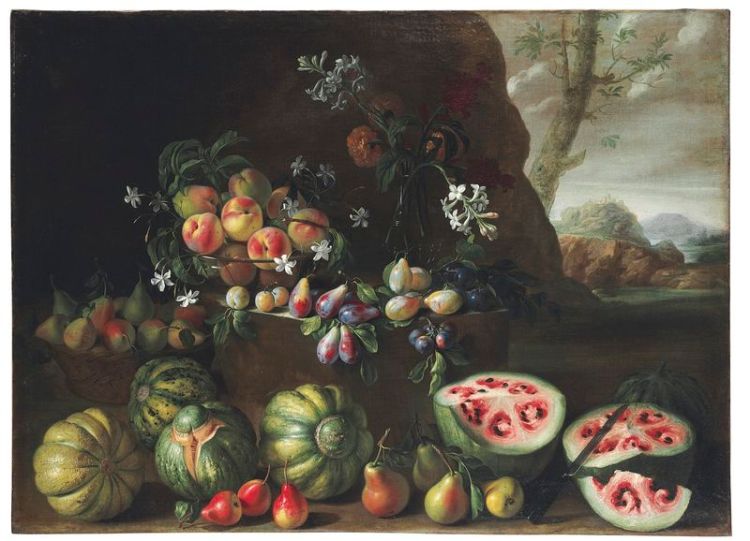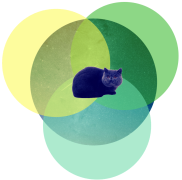Contrary to what you might think, watermelons looked very different (and probably tasted better) in the Renaissance compared to today. Why exactly? Farming practices have changed and genetically modified food has modified the humble watermelon out of its original state of being.
Take a look at this renaissance painting by Giovanni Stanci, courtesy of Christies to see how the fleshy fruit would have looked in the 17th Century.

The curly and compartmentalised flesh of the fruit looks completely foreign to our eyes.
In an infographic by James Kennedy, you can see the genesis of watermelon from seed to cultivation and beyond.
About five thousand years ago in Africa, watermelons were bitter and inedible. They went through thousands of years of selective breeding and became how they appeared in the Renaissance painting. It wasn’t until the middle of the 20th Century that advances in agriculture and crop resistance that scientists were able to develop thicker rinds.
Seedless watermelon varieties come from Japan where crop scientists fiddled with watermelons by adding chemicals to double a watermelon’s chromosomes and create the mutant seedless variety, that is nonetheless convenient for us to eat and therefore universally popular.
Source: James Kennedy
If I had the choice, I would much rather eat the organic, untainted version from Renaissance Italy, what about you?




They probably didn’t cost $4 and $5 a pop then either.
LikeLiked by 1 person
Exactly Dan….I dont know I guess its about season and where you are on the planet. Sometimes in Australia and NZ they are practically throwing them out and they are $1 per kilo
LikeLike
Yup, agreed. How interesting would it be to try all produce in it’s natural, UNmodified form
LikeLiked by 1 person
Yes I think it’s gone on too long for there to be a return to the swirly weird shapes of this watermelon though sadly, thats lost to history
LikeLike
oh my goodness, look at that! an excellent observation, thank you.
Nx
LikeLiked by 1 person
🙂 you always make me go “OH!” 🙂
loved it, as usual
X Nx
LikeLiked by 1 person
how interesting, I never knew…thanks for sharing!
LikeLiked by 1 person
My pleasure Neha glad you liked it 🙂
LikeLiked by 1 person